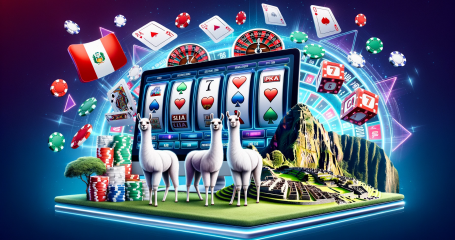
Crash Games Online: The Rise of Fast-Paced Casino Betting
Crash games are taking the online gaming world by storm. These fast-paced, high-stakes games offer a shot of adrenaline unlike anything else on the market. Players from around the globe are flocking to try their luck and strategy in this exciting new format. But what is behind this explosive rise in popularity?
What Are Crash Games?
At their core, crash games are simple and easy to understand. You place a bet, then watch as a multiplier climbs higher and higher on your screen. The catch? The multiplier can “crash” at any moment, wiping out your potential winnings if you haven’t cashed out yet. If you time your exit right, you collect your bet multiplied by the current number. If not, you lose your stake.
Most versions display a rocket, airplane, or line graph shooting upward, adding a visual thrill. The rules are the same across platforms: click “cash out” before the crash for a win. The tension lies in guessing just how high you can safely go.
The History and Origins of Crash Games
Crash games first appeared in the mid-2010s, inspired by the growth of cryptocurrencies and a demand for quick, transparent betting. Early examples like “Bustabit” set the blueprint: provably fair outcomes, transparent mechanics, and a sense of community through live multiplayer gameplay.
These games took cues from financial markets and “bubble” metaphors, mimicking the idea of riding an uptrend before a steep fall. They quickly spread from niche crypto gambling sites to mainstream casinos. Their arcade-like play and visual flair made them popular among younger players familiar with video games, digital assets, and social apps.
The Appeal to a New Generation
Crash games fit perfectly with the habits of a new generation raised on quick content. The short rounds suit competing attention spans. Players want instant feedback and a sense of control, both of which crash games deliver. Their rapid pace, mix of luck and strategy, and potential for big wins keep players coming back for more.
How Crash Games Work
Though themes and graphics may vary, crash games follow similar mechanics:
- You place a bet before the round starts.
- A multiplier begins to climb upward, usually increasing faster as time passes.
- You can cash out at any moment to secure your winnings.
- If you wait too long and the game crashes, you lose your stake.
The crash occurs at a random point, though many games publish the algorithm behind this for fairness. Some allow automatic cash-out at a selected multiplier, adding another layer of strategy.
Games are often designed with simple graphics and real-time multiplayer functionality. Each round lasts only a few seconds to a minute, adding to the suspense. Because you can see other players’ decisions in real time, there’s a strong community element and the thrill of collective risk-taking.
The Role of Technology
Technology has played a huge part in the spread of crash games. Blockchain-based games use provably fair algorithms, letting players check that outcomes aren’t rigged. Smart contracts and transparent code help build trust, especially in the online gambling world, where fairness is a constant concern.
Advances in mobile gaming have also helped. Most crash games work on smartphones and tablets as smoothly as on desktop. Fast internet, smooth animations, and easy bet placement make crash games accessible almost anywhere, 24/7.
Social features add another dimension. Live chat rooms, leaderboards, and public cash-out stats let users interact, compete, and even learn from each other’s moves. This creates a lively atmosphere, much more engaging than solitary slot machines or card games.
Popular Crash Game Titles and Variations
As the format spreads, developers compete to put their own spin on crash games. Here are some of the most popular and innovative varieties:
- Bustabit: The original bitcoin-based crash game, known for its simple interface and provably fair code. It set the standard for transparency and community features.
- Aviator: Developed by Spribe, this title uses a cartoon plane to visualize the climb and crash. Available at thousands of online casinos, Aviator is often newcomers’ first taste of the genre.
- Crash by Stake: This multipurpose betting site offers its own version, with slick graphics and fast rounds. Its popularity helped validate the genre among mainstream gamblers.
- Space XY: A modern spin with a spaceship theme, this game incorporates bonus features like “auto-cashout” and social stats, appealing to competitive players.
Some platforms have begun to experiment with team play, unique multipliers, or even risk tiers for those wanting higher stakes. But all stick to the core promise: fast betting, rising tension, and the danger of a sudden crash.
Why Crash Games Stand Out Among Casino Offerings
Online casinos offer thousands of games—from classic slots to card tables and themed video titles. Yet crash games have risen to the top of “trending” charts worldwide. There are several reasons for this surge:
- Speed: Crash games take seconds to play. You can make dozens of bets in a short session, making results feel immediate and engaging. There’s little waiting, no complex rules, and almost no downtime.
- Simplicity: No need to learn hands, paylines, or special symbols. If you can click a “cash out” button, you can play. This makes crash games approachable for all experience levels.
- Transparency: Many crash games use open-source or provably fair algorithms. This builds confidence among players wary of scams or rigged outcomes.
- Social Atmosphere: Live chat, public win stats, and visible leaderboards turn solo betting into a community event. Players compare strategies, cheer each other on, or console those “caught in the crash.”
- Adrenaline Rush: The ticking clock and climbing multiplier create genuine suspense. Players must balance greed with fear, turning every round into a tense mini-drama.
Crash games often appear alongside sports betting or other live casino products, making them an easy “side bet” for people waiting on results elsewhere. Their universal rules and instant outcomes mean they translate well across languages and cultures, speeding global adoption.
Demographics: Who Plays Crash Games?
Crash games appeal most strongly to players aged 18-35, especially those familiar with digital currencies or active in online communities. Many are drawn from video gaming or trading backgrounds, seeking quick action and a sense of agency missing from traditional slots or lottery games.
According to published data from big platforms, crash games see heavy play in regions such as Eastern Europe, South America, and parts of Asia. Their mobile-friendly design widens appeal, allowing users in markets with limited desktop access to join in.
Social sharing and influencer promotions have brought even more young players onboard. Leading YouTubers and Twitch streamers film real-time crash game sessions, attracting hundreds of thousands of viewers per month. This exposure keeps the trend growing, especially among users interested in both gaming and finance.
The Psychology of the Crash Game Craze
Crash games tap into deep patterns in human decision-making. At its heart, the format is about balancing hope against fear—how long can you ride the wave before disaster strikes? This “risk vs. reward” calculation activates reward centers in the brain, creating a natural rush.
Watching others cash out or crash adds a layer of social proof. Players find themselves betting not just against the house, but against the crowd. This triggers a sense of competition and, at times, a “herd mentality,” where people follow action instead of sticking to long-term plans.
The game’s simple interface—often just a single click to bet or cash out—sidesteps the learning curve of more complicated games. This removes friction and increases engagement, especially for people with less gambling experience but a high appetite for fast action.
Risks and Responsible Play
The same qualities that make crash games popular can also lead to excessive or risky behavior. Experts warn that the short cycle times and simple play can encourage repeated betting, with less time for players to pause or reflect on their decisions.
Most reputable platforms set default loss limits, offer self-exclusion tools, and promote responsible gambling tips. They encourage players to manage their bankroll, set stopping times, and avoid chasing losses. Awareness campaigns remind users that the “crash” is random and impossible to predict, preventing unhealthy “system” play based on superstition or short-term results.
Regulatory bodies monitor these games in some regions, applying the same oversight as for other gambling products. They require clear payout tables, odds disclosures, and at times limit the maximum possible bets to protect more vulnerable players.
Crash Games and Cryptocurrency
Crash games grew up alongside cryptocurrency betting sites. Many early versions only accepted bitcoin or other digital assets, using blockchain data to prove rounds were fair. For tech-savvy users, this transparency was a breath of fresh air after years of vague or undocumented odds in online slots.
Crypto integration makes instant deposits and withdrawals easy, even across borders. Players who already trade or hold bitcoin enjoy seamless participation. With the rise of cheaper “Layer 2” chains like Lightning Network or Ethereum scaling solutions, crash games process hundreds of bets per second with low fees.
As regulation catches up, more licensed platforms offer both crypto and standard payment options, keeping crash games accessible to a wider range of users while maintaining their “digital-native” appeal.
The Social Side: Community, Competition, and Streaming
Unlike most online slots, crash games reward social interaction. Chat windows buzz with jokes, tips, and emotional reactions as multipliers soar or crash. Leaderboards add a sense of competition, displaying top wins and bold moves in real time.
Third-party sites analyze play statistics, track user performance, and compare strategies. Many players keep detailed logs or run simulations between rounds, trying to optimize when and how they cash out. This level of active engagement isn’t found in more passive casino games.
Streaming platforms take the energy even further. Popular creators record their sessions live, sharing everything from massive wins to catastrophic crashes. This “spectator sport” aspect has brought in millions of new viewers and converts, driving further growth.
Strategy: Is There a Winning Approach?
Players often seek reliable strategies to outsmart the crash. Yet, almost all crash games use random number generators or blockchain hashes to determine the crash point each round. No one, not even the site owner, knows when it will happen.
Still, different betting systems persist. Some use “progressive” or “Martingale” tactics, raising bets after a loss in hopes of a win. Others set strict cash-out multipliers, exiting at the same number every round. Experienced users say the best approach mixes discipline with a little risk. Bankroll management and self-control often matter more than any secret formula.
Mathematicians and analysts break down game “RTP” (return to player) rates, which can be as high as 97% on some sites. This transparency helps players decide whether to play and how much to risk. However, the random nature of each round means there’s always a chance to lose, no matter the tactic.
Cultural Influence and the Future of Crash Games
Crash games are pushing the boundaries of what people expect from online casinos. Their viral growth has spurred creative copycats and variations in other digital markets, from fantasy sports to day trading education tools that use similar “crash” mechanics to teach risk management.
Casinos now partner with influencers, musicians, and athletes to brand custom crash games. The simplicity of the format means almost any theme can be adapted—from racing to space to sports. Marketing often stresses entertainment value and community rather than just gambling.
In response, regulators and consumer groups track the impact of crash games on younger audiences. Education around risk and responsible play will likely shape how these products evolve in coming years. Platforms that combine fun, transparency, and protection should continue to thrive.
Crash Games in a Changing Digital World
Digital habits keep shifting. People want quick entertainment, instant results, and genuine connection. Crash games deliver this blend like few other casino products. Their unique format, technological transparency, and sense of excitement meet a growing demand for new ways to play and socialize online.
As virtual reality, streaming, and mobile tech continue to grow, expect crash games to adapt and expand. In many ways, they capture the spirit of our fast-moving world: excitement, risk, social energy, and the thrill of seeing how high you can go before it all comes crashing down.
Crash games have not just reshaped online gambling but have also changed what many people look for in digital entertainment. The combination of speed, simplicity, and interactive fun is likely to keep this format riding high—for those willing to play with care and an eye on the crash.














